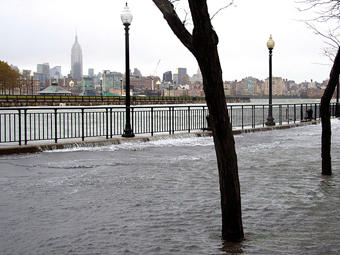
Section Branding
Header Content
Tracking Frankenstorm Sandy Through Sites, Maps and Social Media
Primary Content

Thanks to the Internet we can track the path and the affects of Hurricane Sandy. Educators and students can be more than news consumers in this case. You can study all facets of this storm: its strength, its damage, the after effects (an early blizzard in West Virginia) and where it’s heading next. Here are a few tools to do it:
1.) Why is Sandy Such a Frankenstorm? Send your students on a hunt to answer this question and present their findings. Livescience.com has a thorough explanation in this article: Why is Hurricane Sandy Such A Big Deal Also check out 4 Things You Need to Know About Hurricane Sandy.
Here is a video on How Hurricanes Work:
2.) Where is Sandy Heading Next? Students can assume the role of meteorologist and hurricane hunters here. NPR’s the Two Way recommends this handy app. Google.org’s Crisis Response Map
Students should also view the National Weather Service site.
3.) Track the Damage and the Rescue Efforts Through Social MediaInstruct your students to follow the hurricane damage and how it is affecting people. Here is where the social media curation tool Storify is an awesome help. It pulls tweets, facebook posts, blogs, news and other internet posts based on a keywords. That way students can create their own newsrooms. Here is an example from WNYC’s Storify:
[View the story "Live Updates: Hurricane Sandy" on Storify]
How else are your students tracking the storm? Let us know?
Secondary Content
Bottom Content





